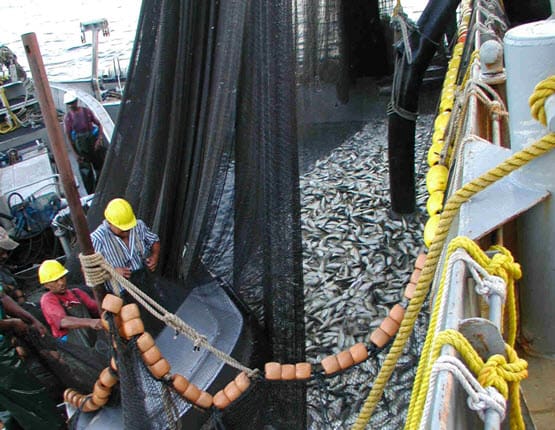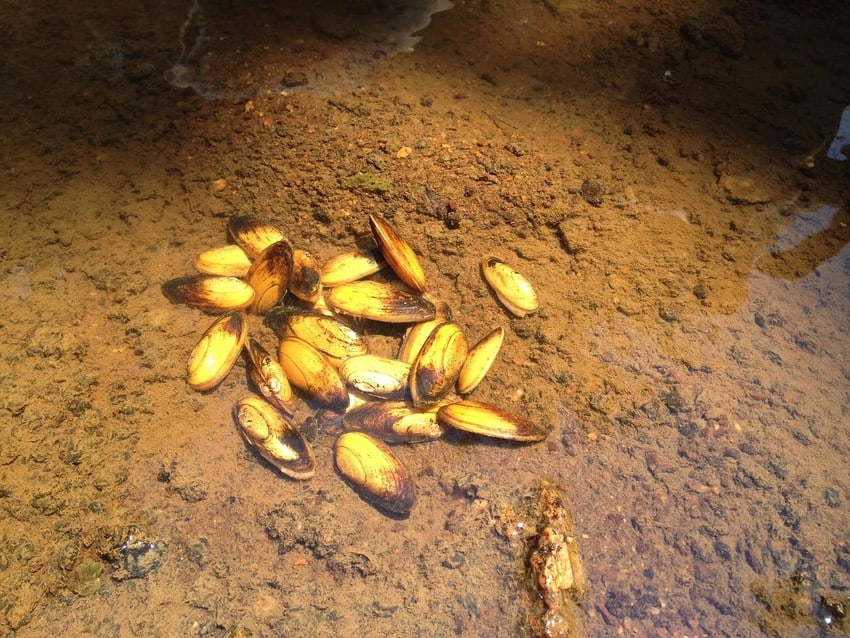In an unprecedented move, East Coast fisheries managers will now make menhaden fishery decisions based on how their abundance impacts predators like crabs, rockfish and birds.
On Wednesday afternoon, the Menhaden Board of the Atlantic States Marine Fisheries Commission (ASMFC) voted unanimously to adopt Ecological Reference Points (ERPs) for managing Atlantic menhaden during the 2021-22 fishing seasons. This vote is a landmark decision to shift from “single species management”, which considers harvest limits of individual fish species without regard to their ecological role, to “multi-species management” that considers the balance between a sustainable ecosystem and supporting commercial and recreational fisheries.
Menhaden are a key “forage” species along the Atlantic coast. We harvest them for fish meal and fish oil as well as for bait, especially crabs. Swimming in schools of tens of thousands of silvery little fish, menhaden also feed birds like gannets, loons, and ospreys, valuable fish like striped bass (rockfish), bluefish, and Bluefin tuna, and even humpback whales. With their nutritious, oily flesh, menhaden are particularly important to striped bass, whose stocks are currently depleted. Thus, this move to conserve menhaden for their ecological roles could play an important part in restoring stripers.
Conservationists hailed the decision. Chris Moore, Senior Ecosystem Scientist in the Chesapeake Bay Foundation’s Virginia Office said, “ASMFC and its many stakeholders have long recognized the ecological importance of menhaden in the Chesapeake Bay and along the entire Atlantic Coast. Appropriately accounting for the value of menhaden to a host of other species is long overdue, but the day has finally come.”
“This will support not only a healthier ecosystem but more economic opportunities for those businesses that rely on a robust menhaden population for their success,” Moore continued.
The business that relies on menhaden most, Reedville, Virginia-based Omega Protein, supports the decision to use ERPs. “Omega Protein looks forward to working with the Commission and its staff on further developing the ERP model and identifying future harvest levels for the fishery,” said Omega spokesman Ben Landry.
“Nonetheless,” he continued, “many of [menhadens’] key predator stocks, notably striped bass, are currently overfished. These species will require harvest reductions to fully restore the population back to targeted levels and cannot rely simply on the availability of menhaden to rebuild it.”
Several members of the Menhaden Board echoed Landry’s comment that the predator species will need careful management as well, especially rockfish, and this vote won’t guarantee improvements to rockfish abundance. But the recreational industry that relies on stripers believes it’s a step in the right direction.
“As recreational anglers, we commend the board for adding this new tool to the tool box which allows for a more holistic approach to managing the coast’s most valuable forage for striped bass and many other important recreationally caught gamefish species,” said David Sikorski, executive director of Coastal Conservation Association Maryland.
At ASMFC’s Annual Meeting in October, where the Commissioners will use the new Ecological Reference Points to set the Total Allowable Catch for menhaden in the 2021-22 seasons, as well as moving forward on new measures to rebuild the Atlantic coast’s striped bass stocks.
To follow the process, visit www.asmfc.org. To learn more about how Ecological Reference Points work, see “Science Highlight” in ASMFC’s latest newsletter.
-John Page Williams



